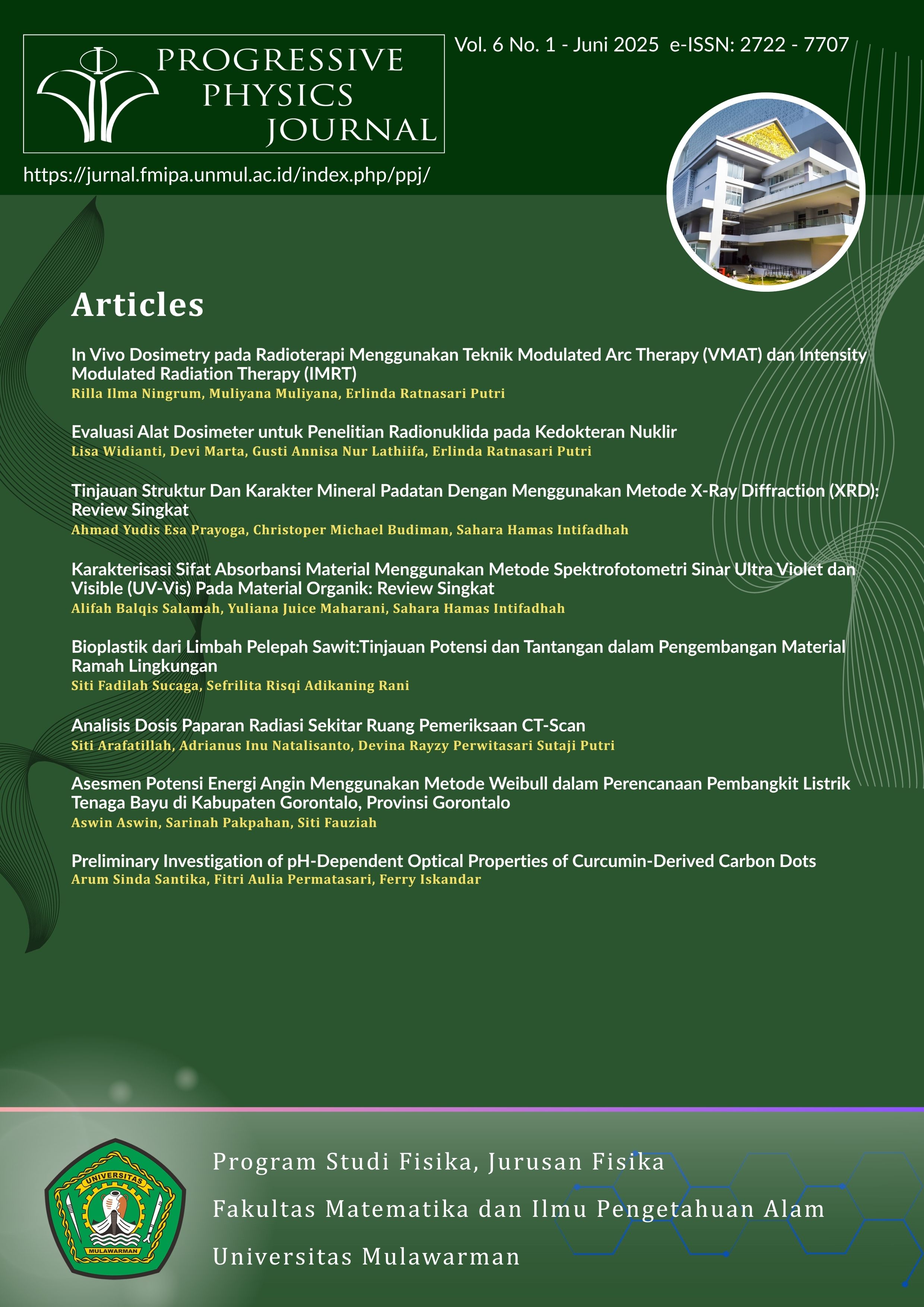Preliminary Investigation of pH-Dependent Optical Properties of Curcumin-Derived Carbon Dots
DOI:
https://doi.org/10.30872/ppj.v6i1.1522Keywords:
Biomedical Applications, Carbon Dots, Photoluminescence, Curcumin, pHAbstract
Carbon dots (CDs) are photoluminescent nanoparticles smaller than 10 nm with excellent optical properties, including high photostability, UV and visible light absorption, water solubility, low toxicity, and good biocompatibility. These features make them attractive for biomedical, optoelectronic, and catalytic applications. Curcumin, a polyphenol from turmeric, possesses anti-inflammatory, antibacterial, anticancer, and antiviral properties, but its poor water solubility limits its biomedical use. In this study, CDs were synthesized from curcumin and urea via a solvothermal method at 140 °C for 180 minutes to improve curcumin's solubility. The effect of pH on the optical properties of CDs was investigated by adjusting acidity with citric acid and alkalinity with NaOH. UV-Vis and photoluminescence (PL) spectroscopy revealed that the optical properties of CDs are strongly influenced by pH, likely due to the presence of keto-enol tautomerism in curcumin. The pH sensitivity of these curcumin-derived CDs highlights their potential for biomedical applications such as photothermal therapy, bioimaging, drug delivery, and antiviral agents.
Downloads
Downloads
Published
Issue
Section
License
Copyright (c) 2025 Progressive Physics Journal

This work is licensed under a Creative Commons Attribution-ShareAlike 4.0 International License.







